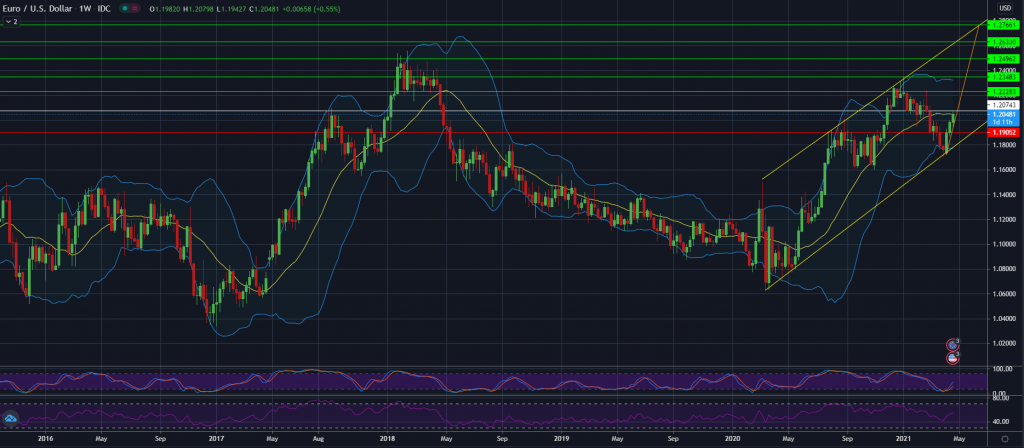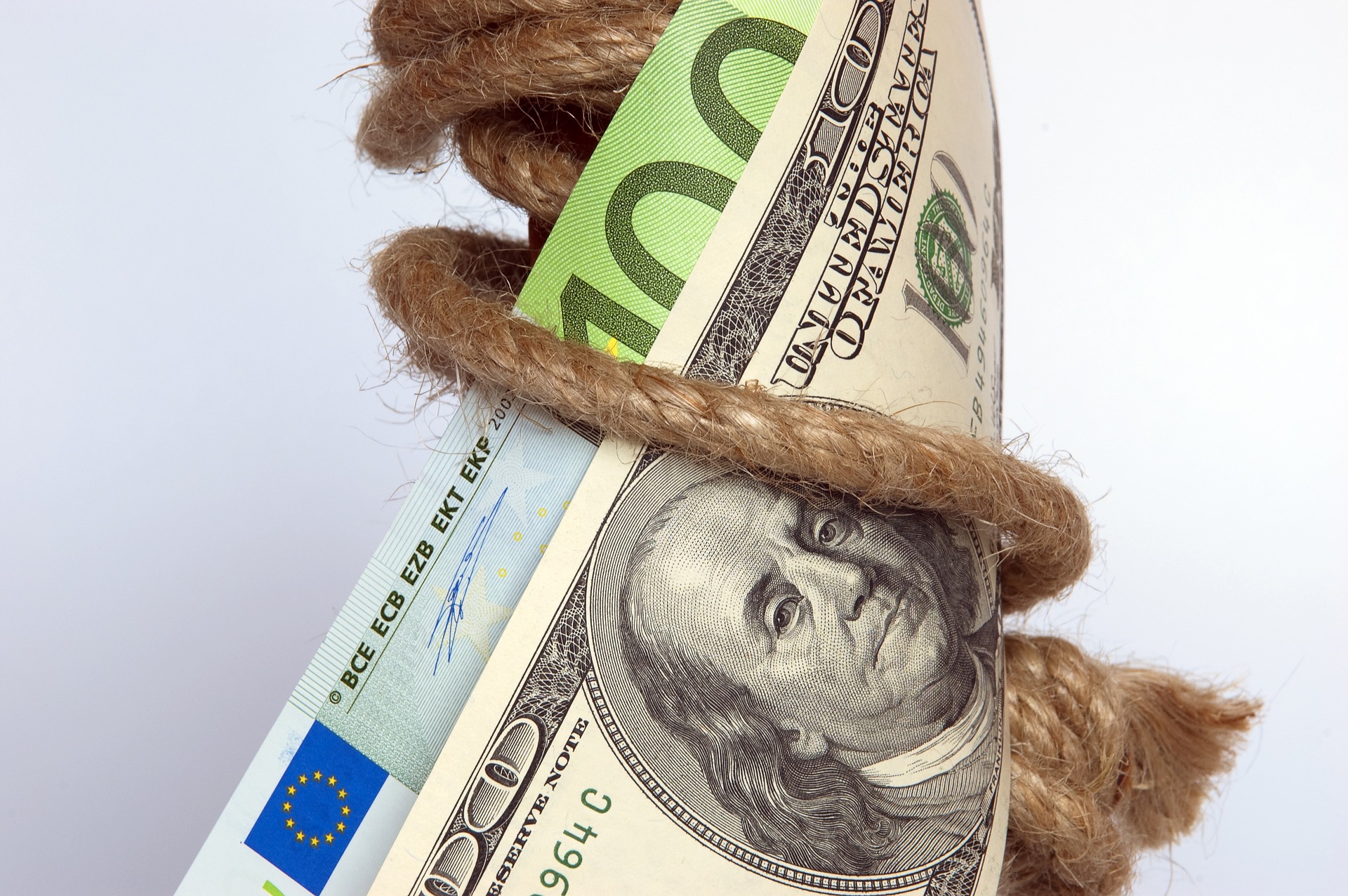Dollar weakness cannot last forever – but the euro may find fresh reasons to rise. The surge above 1.20 has been driven by the greenback’s decline, which has various reasons. Optimism that the US recovery drags the world economy higher and relatively tame US Treasury yields are the main reasons for the move.
Returns on benchmark ten-year US bonds are around 1.62% at the time of writing, still significantly below the peak of 1.77% but above the recent bottom just below 1.55%. Can the dollar remain depressed while yields continue recovering?
Another potential cap on the greenback comes from President Joe Biden’s infrastructure spending plans. The Commander in Chief met a Congressional delegation on Monday and additional developments are likely on Tuesday. If Democrats manage to pass a corporate tax hike, it will mean less debt issuance down the road and less pressure on bonds. In turn, lower yields would weigh on the dollar.
However, the next EUR/USD moves likely depend on developments in the old continent. The European Medicines Agency (EMA) is set to publish its verdict on Johnson & Johnson’s single-dose vaccine on Tuesday. After last week’s suspension, there is a good chance that the regulator allows its usage, boosting Europe’s vaccination campaign.
The suspension in Europe followed that in the US, a result of six cases of blood clots after 6.8 million jabs was given. While the EMA may enact age or other limits, the unleashing of 55 million inoculations in the current quarter would put Europe in a significantly better spot.
Europe has already ramped up its immunization campaign, reaching roughly 20% of its population with one shot.
Another boost to the common currency may come from Germany, where the ruling CDU/CSU bloc is about to decide on who will be the party’s chancellor candidate. According to reports from Berlin, the CDU’s moderate leader Armin Laschet will likely remain at the helm, providing some relief to markets.
Investors are also speculating about the European Central Bank’s rate decision on Thursday, and it may have reasons to be optimistic as well.
European Central Bank President Christine Lagarde is getting ready to talk about Europe’s outlook, and the message will be that the economy still needs a lot of help. The central bank for the 19 European Union countries that use the euro still has almost a trillion euros of stimulus that’s been approved and will be pumped in this year and next, in the form of bond purchases with newly printed money. That means the ECB is unlikely to see the need to add more at its meeting Thursday. Instead, Lagarde will use her news conference to reassure markets that stimulus will go on for as long as needed.
Five reasons for Lagarde to lift the euro:
1) Vaccination finally picking up –
Many Europeans remain frustrated with the old continent’s lag the US and the UK on the immunization front, but the pace of inoculations has substantially picked up. Roughly one in every five residents has received a jab and vaccine deliveries are set to accelerate in the coming months.
The EU recently announced a boost of 50 million doses of the Pfizer/BioNTech doses are coming this quarter, and regulators may give the green light to Johnson & Johnson’s jabs by the time the ECB convenes. Accelerated prospects of exiting the crisis could be reflected in the bank’s comments.
2) Survey optimism –
While some economies are still under a lockdown and COVID-19 infections are high, businesses are optimistic. The German ZEW Economic Sentiment, the Sentix Investor Confidence, and Markit’s Purchasing Managers’ Indexes have been rising and surprising to the upside in recent months.
To make forward-looking assessments, the ECB looks at these gauges of future activity and it may also shape their upbeat outlook.
3) Uncle Sam wants (also) European goods –
“When the US sneezes, the world catches a cold” – goes the adage about economic crises, and the same goes for booms. US Retail Sales leaped in March by 9.8%, a result of US vaccinations and massive fiscal and monetary stimulus. Americans not only consume local goods but also purchase products and source materials abroad.
The US recovery is set to lift the global European economies and is also a factor in Lagarde’s considerations – and that is before President Joe Biden passes his vast infrastructure bill.
4) Yields still under control –
Last month, the ECB announced it would bring forward some of its bond-buying to keep yields lower and support the nascent recovery and keep governments’ borrowing costs depressed. The bank publishes its weekly purchases every Monday and it struggles to ramp up its acquisitions, keeping traders perplexed.
Nevertheless, yields remain depressed, helping governments raise money and support the recovery. Returns on ten-year Italian bonds are around 0.80% at the time of writing – roughly half of US Treasuries of the same maturities. German yields are well below zero.
Under these circumstances, the bank may continue buying bonds at a sluggish pace, printing fewer euros while the economies continue recovering.
5) Hawks rising from their nests –
The Frankfurt-based institution’s hawks have been rather tame in recent months, as Europe endured new waves of the virus. However, German, and other northern members may revert to their inflation-averse roots as consumer prices lift their heads across the pond.
Like the positive influence the US boom has on Europe, its rising prices may also affect the old continent. The ECB has a “single needle in its compass” – fighting inflation – and that may bring Bundesbank President Jens Weidmann and several colleagues to hit the brakes.
Any hint that the bank’s Pandemic Emergency Purchase Program may not run its full course – refrain from using the “full envelope” as the ECB says – could also be euro positive.
EUR/USD Long (Buy)
ENTER AT: 1.20743
T.P_1: 1.22283
T.P_2: 1.23483
T.P_3: 1.24962
T.P_4: 1.26330
T.P_5: 1.27661
S.L: 1.19052



